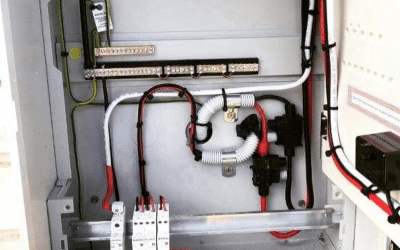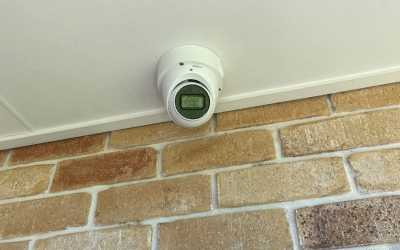Although many of us see it as a mere practicality, lighting is an essential, and often overlooked, ingredient of decorating a room. While it’s way more tempting to spend lots of time picking out furniture and pouring over different colour schemes, it’s important to remember that the right kind of lighting can completely transform a space.
Far from merely being functional, the right light makes us want to spend more time in a particular space. It helps lift our mood, makes us feel more motivated – or, in contrast, relaxed – and can make the time we spend with our family and friends all the more enjoyable.
However, when it comes to lighting a room, it’s definitely not a matter of “one style suits all”: different rooms have different needs. To bring out the best in each room, you need to learn about what kind of lighting works best and why.
With that in mind, in this post, we’ll look at the different types of lighting and how to apply them to the different rooms within your home for the most impressive outcome.
What Are The Four Types Of Lighting?
Before we delve into the best type of lighting for each room in your home, let’s overview the four main types of lighting and common examples of each. As you’ll see, many fixtures can be applied to more than one type of lighting.
Ambient Lighting
Ambient lighting is generally the main light source in any room. Its purpose is to provide uniform levels of illumination over an entire space, independently from other lighting sources.
Ambient lighting fixtures include:
- Ceiling mounted fixtures
- Flush and semi-flush lights
- Recessed lights (downlights)
- Pendant and mini pendants
- Linear suspensions
- Chandeliers
- Wall-mounted fixtures
- Uplights
- Downlights
- Wall-mounted spotlights
- Flush-mounted wall lights
- Wall-mounted pendants
- Track (rail) lighting
- Floor Lamps

Task Lighting
Task lighting is specifically tailored for the various tasks you’re likely to undertake in a particular room. This includes prepping and cooking food in the kitchen, getting dressed in front of a mirror, or working at a desk or table.
Task lighting fixtures include:
- Recessed lighting (Downlights)
- Adjustable spotlights
- Pendant lighting
- Wall-mounted fixtures
- Downlights
- Wall-mounted spotlights
- Flush-mounted wall lights
- Swing arm wall lights
- Flexible arm wall lights
- Track (rail) lighting
- Floor lamps
- Desk lamps
- Undercabinet lighting
- Slimline bars
- Extrusions

Accent Lighting
Accent lighting illuminates certain points of interest within a room: drawing the eye towards them. This can include highlighting a particular item of furniture or architectural feature, a unique art piece, or even creating the impression that a room is larger than it is.
Accent lighting fixtures include:
- Wall-mounted fixtures
- Wall sconces
- Uplights
- Downlights
- Flush-mounted wall lights
- Wall pendants
- LED Strip or Tape Lighting
- Directional recessed lighting (downlights)
- Track (rail) lights
- LED pucks

Decorative Lighting
Decorative lighting is all about finishing touches and helping you make a strong statement. Just like accent lighting, its purpose is to stir interest and direct the gaze towards a particular place or feature within the room.
Decorative lighting fixtures include:
- Pendant lighting
- Chandeliers
- LED pucks
- LED candles
- Fairy lights
- Rope lights
- Wall sconces
- Wall washers
- Table and floor lamps
- Ceiling fans with light kits

What’s the Best Type of Lighting for Each Room?
Lighting for Living Rooms
The centrepiece of most homes, a living room suits several purposes. This includes a place to watch TV and host movie nights, a location for casual entertaining and parties, and, of course, somewhere to simply sit back and relax. With this in mind, you’ll want adaptable lighting for functionality and to swiftly change the feel and mood of the room.
Although simple, fitting a dimmer is a great place to start: it’s quick, inexpensive, practical and gives you the ability to effortlessly change the atmosphere of your living room. Similarly, in terms of flexibility, track lighting is a good choice for living rooms because it can provide ambient, task, or accent lighting. As you can rotate and aim individual track lights, you have the ability to alter the living room’s lighting scheme and illuminate particular sections.
Alternatively, if your living room has a main seating area, overhead lighting fixtures like recessed lighting, flush mounts, and pendants are a great way of providing sufficient lighting and drawing attention to the centre of the room. If a TV or home entertainment system helps to form the centrepiece of your living room, you can create a cinema-like feel with lighting that doesn’t cause shadows or glare. Dimmable wall sconces and wall uplights are great for this, as they allow you to move around safely without causing a distraction.
Lamps are also especially useful in living rooms, as they can be used for task, accent, and decorative lighting (while also acting as a decoration in themselves). While table lamps are great for task lighting, such as for a bit of late-night reading on the sofa, floor lamps are excellent for illuminating shadowy corners, as well as bringing attention to a buffet, bookshelf, or another large piece of furniture.
Lighting for Dining Rooms
As well as being the place where delicious meals are eaten, the dining room is a place for conversation and socialising, so a dark, shadowy atmosphere is far from ideal. Fortunately, the dining room is also one of the easiest rooms to light. That said, it’s important to strike the right balance: ensuring that your chosen lighting fixtures are both practical and aesthetically pleasing – as, alongside your living room, this is the area of your home that guests are most likely to see.
For great overall lighting, opt for ceiling fixtures, such as flush mounts, recessed lights, and pendants or mini-pendants – depending on the height of your ceiling. Now, if you really want to make a statement, and it fits with the look you’re going for, go for a chandelier centred over the dining table. Naturally, this serves as ambient lighting but will also work as task lighting, for pouring over bills or your kids tackling their homework.
As far as accent lighting goes, you can use floor lamps to illuminate any dark corners and help balance the brightness in the room. You can also achieve this with well-positioned wall lights, like sconces and uplights. Better still, if you have paintings or photographs displayed on your dining room walls, you can use picture lights. These serve the dual purpose of highlighting each object and providing accent and decorative light.
Lighting for Bedrooms
The good news is that, generally, bedrooms are pretty simple to light – as they mostly need a main, overhead light source and table or floor lamps on nightstands or dressers. However, there are several things you can do to improve the ambience and decorative effect created by lighting. This will improve the overall mood and feel of the bedroom – and enhance the efficacy of task lighting.
As far as ambient lighting goes, you’ll need central overhead lighting to cast light evenly around the entire room. A flush or semi-flush mounted light fixture is a sound choice that adds a touch of decoration, though you can go for pendant or mini-pendants for something a little more daring and ornate. Better still, the main light source should be wired to a dimmer switch to give the inhabitant finer control over the light intensity.
Floor lamps are a good addition for illuminating the parts of the room that the ceiling light fixture doesn’t quite reach; depending on the size of the room, may need more than one lamp. They can also be a good alternative if you don’t have an overhead fixture. You can also use wall sconces as a source of soft ambient light, as well as accent lighting.
When it comes to task lighting, you’ll want to tailor it to the things the person residing in the room does. If they use it as a workspace, the simplest option is a desk lamp, with viable options including a swing arm or flexible arm wall lights. Additionally, you should fit your chosen fixture with a bulb with a cooler colour temperature to help the inhabitant stay alert and focused and prevent eye strain. Similarly, they might need bedside lighting for reading. However, in this case, it’s best to avoid melatonin-blocking blue light that can prevent us from falling asleep. Instead, go for warm, or very warm, white bulbs
The right task lighting around a wardrobe, vanity cabinet, or dressing table will greatly assist the room’s inhabitant help you get dressed or apply makeup without casting harsh shadows. Wall fixtures, like sconces, lamps, or wall-mounted pendants, are a good bet here, provided they’re aimed downwards at the furniture. your wardrobe and not into your eyes. Plus, wall sconces positioned near a mirror can pull double duty by providing adequate light for dressing and extra ambient light by casting light back against the wall.
Lastly, accent lighting for bedrooms is primarily decorative and should be used to highlight a person’s favourite features, be it a poster, piece of art, or piece of furniture. Pendants and lamps – with a stylish lampshade – are great for this as they can be used to complement the aesthetic the person is going for. Other great accent and decorative lighting options include fairy lights, LED candles, strip lights, and rope lights.

Lighting for Kitchens
When it comes to lighting your kitchen, it’s best to not try to illuminate it with one or two super-bright ceiling fixtures, as this is likely to result in excess shadows and glare. Instead, as kitchens are typically one of the larger rooms in a house, they benefit from a variety of ambient, task, and accent lighting.
For ambient lighting, use ceiling lighting sparingly to create even, diffused lighting throughout the kitchen. This includes recessed, flush, semi-flush, pendant, or mini-pendant lighting fixtures. If you want to be bolder and have a high ceiling that will allow them, you could also go with a chandelier or linear suspensions.
Now, if you have a kitchen island, you have to consider task lighting as well ambient lighting, as this is one of the main areas where you’ll be preparing food. Fortunately, task lighting can be provided by the aforementioned overhead light fixtures – with recessed downlighting and pendants proving especially helpful. Additionally, adjustable spotlights are a great option for directional task lighting. For this reason, a monorail can be an excellent choice for kitchen islands because you can fit it with spotlights, for task lighting, and pendants, for ambience and decoration. Plus, you’ll have the ability to bend and position the rail to suit your various needs.
As for other task lighting, for illuminating countertops and other surfaces, this can be achieved with adjustable spotlights and recessed downlights. Depending on how they’re positioned, these can also double as ambient lighting – or vice-versa. However, the fixtures should be positioned directly over the worktops, as opposed to walkways, as this avoids them casting a shadow while you’re prepping food.
Alternatively, as countertops around the perimeter of the kitchen typically sit below upper cabinets, you can also employ undercabinet lighting to illuminate those areas. For this, you can use LED strip (tape) lights, puck lights, or light channels.
Inexpensive and easy-to-install LED lighting can also be used for accent lighting, to draw attention to particular features in your kitchen. Strip lighting is great for shelves and within kitchen cabinets and even drawers. Puck lights are also great for glass-door cabinets, as they create isolated pools of light that offer a decorative effect.
Bathroom Lighting
In contrast to kitchens and living rooms, bathrooms are usually the smallest rooms in a house. This means the lighting fixtures you choose will have to act as an ambient, task, and accent lighting – while you’ll have to rely on the style of those fixtures for a bit of decorative flair. Also, like the task lighting for a wardrobe or dresser in a bedroom, the bad lighting in a bathroom can be unflattering. This is especially the case for light fixtures positioned directly above your mirror or sink, as they cast unwanted shadows and glare.
To remedy this, place ceiling fixtures as much in the centre of the room as possible, so they spread light evenly throughout the bathroom while not being too close to the mirror. A flush-mounted fixture fits the bill here, as do a few well-placed, adjustable recessed spotlights. As suggested by other rooms in this post, it’s even better to pair these fixtures with a dimmer switch so you can turn the lighting level up or down for more visibility.
For focused task lighting around the mirror, you can use wall-mounted fixtures, like min-pendants or sconces, on either side, for more balanced lighting. You can also add tasks, which double as an accent, lighting at the base of bathroom cabinets in the form of LED strip lighting. This will create a subtle glow that will help you locate items in the cabinet, as well as double as a night light if go to the bathroom in the middle of the night.
Now, when it comes to illuminating a shower stall, you’ll need to consider your choices carefully, as you have to think about the moisture the lighting fixture will be exposed to. To this end, recessed spotlights are the best choice, though a flush-mounted fixture will work in some cases. Whatever you’re thinking, it’s essential to consult an electrician to get advice on what’s possible in your current bathroom setup.
Bathtubs, on the other hand, give you a few more options and allow you to get more creative. For instance, as well as recessed and flush lighting, depending on the height of your ceiling, you could opt for a hanging fixture such as pendants – or even a chandelier. The area surrounding the bathtub is also a prime position for some accent or decorative lighting –that draws attention to the tub. This could include some tape lighting or some LED candles to take the place of real ones.

Lighting For Hallways
And lastly, we come to hallways, which, fortunately, as transition areas between rooms, don’t have as many specific lighting concerns as other spaces. Also, being narrow, hallways don’t require as many lighting fixtures. Consequently, seeing as the main concern in a hallway is being able to see where you’re going, a few well-spread-out light sources will do the trick.
For this, you could install a few ceiling fixtures, such as recessed lighting – or even a chandelier if you have the ceiling for it (such as by your front door) and want to make a statement. You could also opt for tape lighting in the cornices, where the ceiling meets the wall, of hallways.
Alternatively, you employ wall fixtures for a series of accented light sources – which will double especially well as ambient light sources in smaller hallways. This could include wall washers, uplights or sconces, as well as picture lights to highlight any framed art or photographs lining the hall.
In summary, to achieve the most striking results and dramatically transform the look and feel of a room, you’ll want to layer your lighting. To achieve this, you’ll want to consider 4 types of lighting:
- Ambient lighting: the main light source in any room.
- Task lighting: tailored for the tasks you’re likely to perform in a particular room.
- Accent lighting: designed to illuminate certain points of interest within a room.
- Decorative lighting: to put the finishing touches on a room, or a section within it.
If you’d like some you want expert advice on the best way to improve the lighting in any of the rooms in your home, contact us to talk it through – and for a free, zero-pressure quote.







